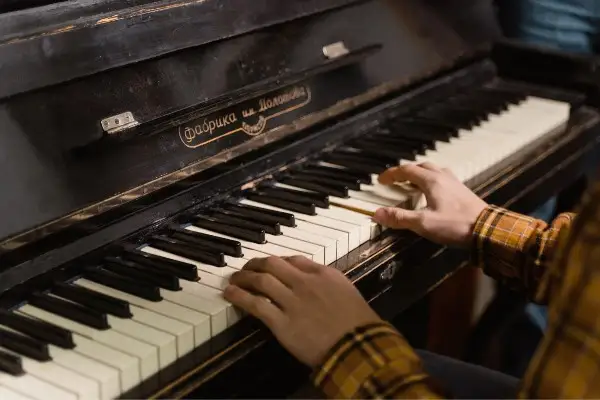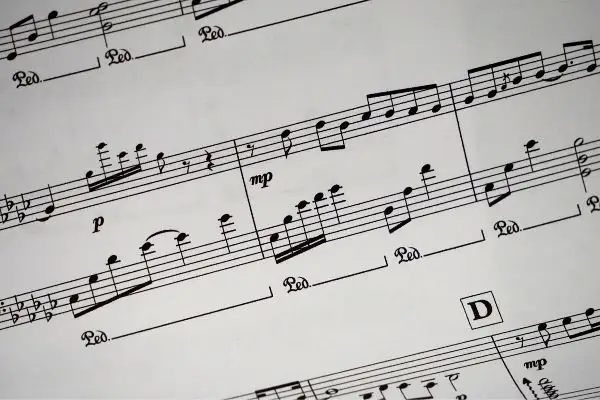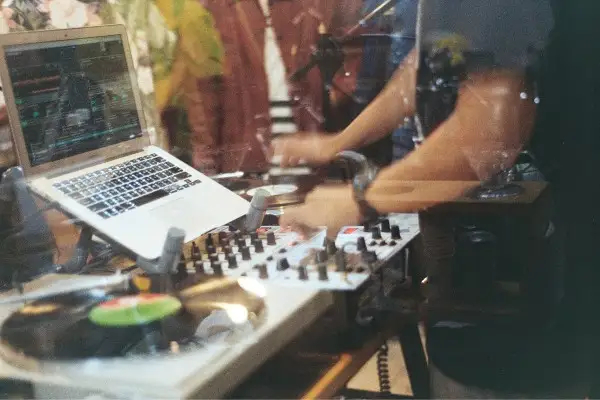Have you ever tried to sing your favorite cover song only to find that the original arrangement is outside of your range? Attempted to play a song but found the music a bit too complex for your current skill set? The key you're missing is the art of music transposition.
Transposing music, or migrating the original key signature to a new key signature may seem a bit daunting at first, but we'll prove that it's a skill any musician can develop. Below, we'll showcase exactly how to transpose any piece of music. Let's take a look!
What Is Music Transposition?

Music transposition or transposing music is the process of moving a collection of notes on sheet music or otherwise to a different key signature. Transposing music involves keep a consistent ratio across all notes.
For instance, if you transpose a piece of music by six half steps, your first note with move six steps as will the second, so on an so forth. The distance at which music is transposed is usually communicated through half steps, whole steps, and semitones.
You can transpose music to move from one key signature to another. However, a major key cannot be transposed into a minor key and vice verse-- this is because the contextual relationship between a half step or whole step stays the same.
If you take C major and transpose the scale up two whole steps, you'll be left with E Major. The scale quality is not changed, only the placement of the starting concert pitch or tonic of any particular scale.
Why Should You Transpose Music?

Music transposition is an important skill to cultivate, but why? Here's precisely why every musician, beatmaker, and beyond should understand the basics behind transposing tunes:
Understand The Relationships Behind Key Signatures
Perhaps the greatest perk of understanding transposition is developing a foundational knowledge of music theory. By transposing music, you start to understand the patterns behind key signatures and scales which can help you learn to improvise and become a more literate musician. Want to expand your knowledge further? Check out our other guides on music theory .
Make Music Easier to Read
Challenging yourself as a musician is the only way to grow. However, sometimes you have to meet yourself where you or your bandmates are currently at. Transposition lets you bring a piece to a level you're comfortable with.
Music transposition can be a total necessity on a practical level if the native key is outside your vocal range or that of your instrument. Common transposing instruments include clarinet, French horn, and saxophone due to their uncommon native keys.
Building Complex Arrangements or Mashups
Want to bridge two of your favorite songs but don't know how? Transposition unlocks your ability to bring any pieces or samples together, working in the context of a shared key signature. For this reason, it's an amazingly valuable skill for composers and producers alike.
How Do I Transpose Music To Another Key?

So, how do you transpose music? Here is a five-step approach that will help you move from one key to the next without issue:
1. Identify Your Starting Key
To start, identify what your music is currently in. Keep in mind that when transposing instrument or vocal parts, you can only move to another starting point, not a different tone quality. A major key can be moved to the other major key starting on a different scale degree, but it can't be transposed to a minor key.
2. Identify Your Target
What is your target key signature? If you play some of the most common transposing instruments like alto saxophone you're probably moving to something a bit higher, but generally the rule is base your target key off of what's easiest to play, sing, or combine with another song. Figure out the distance between your original key and the final desired key.
3. Transpose The Notes and Chords
Let's say you want to move from C major to G major. The distance between C major and G major is five whole steps, therefore each note in the the key of C must be moved up five whole steps to successfully be transposed to G major. The C major scale, C D E F G A B, transforms into the G major scale G A B C D E F#, with each note moving up by five whole steps.
4. Double Check Accidentals
Not all notes agree with the key signature-- that's why we have accidentals. Make sure you double check your transposed piece of music for carrying over any sharps or flats.
5. Rinse and Repeat
Like any other skill, transposing musical material takes practice. Find your most comfortable key and make a point to continue walking through the manual process of transposing chords and melodies into that desired key.
Transposing Music with Software

Even if you don't have the need to do so often, learning how to transpose music by hand is a great way to expand your understanding of key signatures and music as a whole. That being said, you can use any digital audio workstation to help you transpose notes, MIDI, or entire audio files.
MIDI
One of the reasons why MIDI is so flexible is the ability to transpose with a couple of clicks. To transpose a melody line or chord progression in your DAW, simply open up your MIDI or piano roll, highlight all of the notes, and then move your notes up or down the desired amount of semitones.
Pitch Shifting
Most DAWs have built-in pitch shifting that allows you to change the pitch of individual audio files by a set amount of half steps and whole steps. To transpose a song with this method, convert all of your tracks to audio first. Then, use your pitch-shifting plugins to change your audio files so that they meet your desired key signature.
Tuning Plugins
Independent VSTs and plugins like Antares' Autotune and SoundToy's Little Altar Boy can be used to change the pitch of any instrument or audio track. Just keep in mind that these pitch shifters can be a bit more obvious than editing the source MIDI material, so it might not be the best choice depending on your preferences.
Transposing Music FAQs
Are you still struggling to understand music transposition? Here are some commonly asked questions and answers to help expand your understanding as a musician:
What does transposing mean in music?
The basic transposition music definition boils down to knowing how to convert a piece of music into a different key signature than the original piece. This gives you more flexibility to perform the piece based on your singing range or instruments' home key.
Why do you transpose music?
You transpose music to make it easier to play, perform, or just for the fun of it! Transposing music allows you to align all the notes in a piece to your target key.
Is it easy to transpose music?
Learning how to transpose music takes a basic understanding of key signatures, but it is a skill that can easily be learned. You can also use digital software to transpose music to different keys, which makes the process even easier.
Hopefully, this guide makes it easy for you to transpose songs in any setting. Have fun transposing music in and out of major or minor keys.





